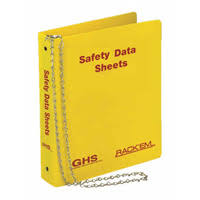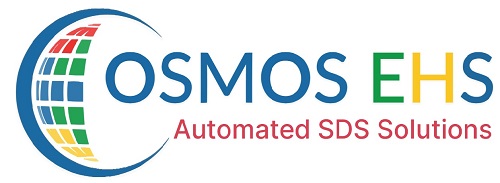
01. WHAT IS SAFETY DATA SHEET (SDS)?
An SDS (formerly known as MSDS) includes information such as the properties of each chemical; the physical, health, and environmental health hazards; protective measures; and safety precautions for handling, storing, and transporting the chemical.

02. WHERE CAN I GET SDS’S?
Team from Cosmos EHS will help you get the required SDS’s, Please Drop us a line here or write a email @ info@cosmosehs.com
03. WHO ARE SDS’S FOR?
SDS’s are mainly used by:
1. Employees who may be occupationally exposed to a hazard at work.
2. Employers who need to know the proper methods for storage, safe use etc.
3. Emergency responders such as fire fighters, hazardous material crews, emergency medical technicians, and emergency room personnel.

04. WHAT DOES AN SDS LOOK LIKE ?
SDS will have a Mandatory 16-part format. Below are the 16 sections in all SDS’s
Section 1: Identification: Identifies the chemical on the SDS as well as the recommended uses. It also provides the essential contact information of the supplier.
Section 2: Hazard(s) Identification: Identifies the hazards of the chemical presented on the SDS and the appropriate warning information associated with those hazards.
Section 3: Composition/Information on Ingredients: Identifies the ingredient(s) contained in the product indicated on the SDS, including impurities and stabilizing additives.
Section 4: First-Aid Measures: Describes the initial care that should be given by untrained responders to an individual who has been exposed to the chemical.
Section 5: Fire-Fighting Measures: Provides recommendations for fighting a fire caused by the chemical.
Section 6: Accidental Release Measures: Provides recommendations on the appropriate response to spills, leaks, or releases, including containment and cleanup practices to prevent or minimize exposure to people, property, or the environment.
Section 7: Handling and Storage: Provides guidance on the safe handling practices and conditions for safe storage of chemicals.
Section 8: Exposure Controls/Personal Protection: Indicates the exposure limits, engineering controls, and personal protective measures that can be used to minimize worker exposure.
Section 9: Physical and Chemical Properties: Identifies physical and chemical properties associated with the substance or mixture.
Section 10: Stability and Reactivity: Describes the reactivity hazards of the chemical and the chemical stability information.
Section 11: Toxicological Information: Identifies toxicological and health effects information or indicates that such data are not available.
Section 12: Ecological Information (non-mandatory): Provides information to evaluate the environmental impact of the chemical(s) if it were released to the environment.
Section 13: Disposal Considerations (non-mandatory): Provides guidance on proper disposal practices, recycling or reclamation of the chemical(s) or its container, and safe handling practices.
Section 14: Transport Information (non-mandatory): Provides guidance on classification information for shipping and transporting of hazardous chemical(s) by road, air, rail, or sea.
Section 15: Regulatory Information (non-mandatory): Identifies the safety, health, and environmental regulations specific for the product that is not indicated anywhere else on the SDS.
Section 16: Other Information: Indicates when the SDS was prepared or when the last known revision was made.
05. ARE THERE ANY TUTORIALS THAT EXPLAIN HOW TO READ AN SDS?
Yes, this OSHA Brief titled “Hazard Communication Standard: Safety Data Sheets”; provides a section-by-section explanation of the required information on SDS’s under the 2012 revision to the HCS.
Below are a few additional resources available online.
Canadian Centre for Occupational Health and Safety’s WHMIS 2015 – Safety Data Sheet (SDS) is a simple summary along with some common questions.
Reading Safety Data Sheets from MIT.
SDS 101 – Reading and Using Safety Data Sheets from the American Veterinary Medical Association.

